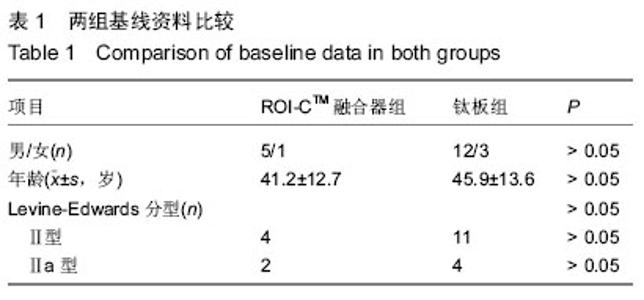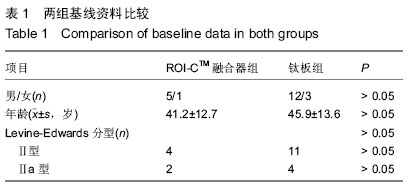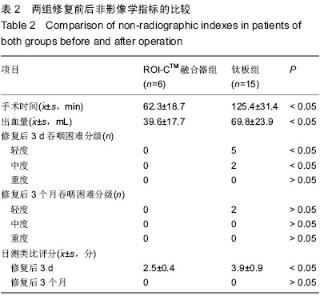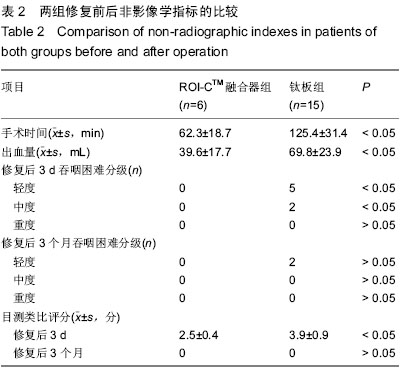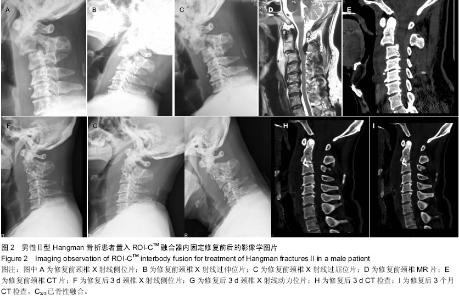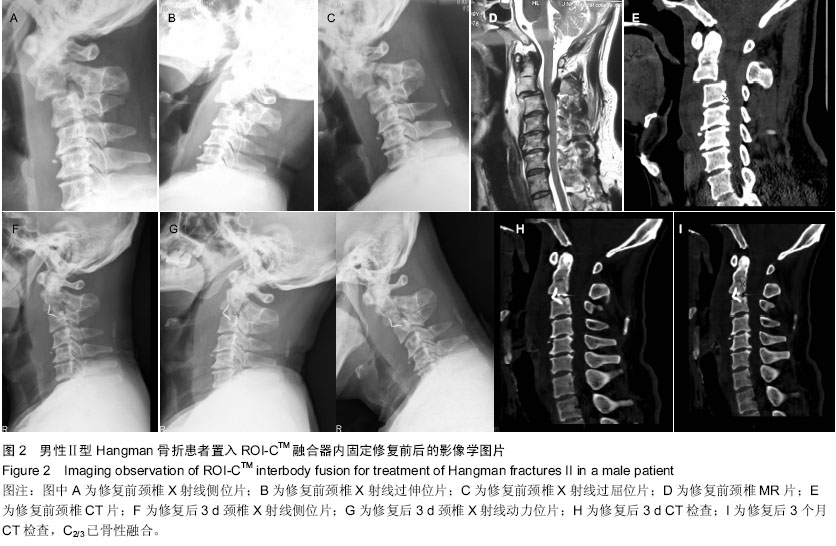| [1] Li Z,Li F,Hou S,et al.Anterior discectomy/corpectomy and fusion with internal fixation for the treatment of unstable hangman's fractures: a retrospective study of 38 cases. Neurosurg Spine J.2015;1(30):1-7.
[2] Marton E,Billeci D,Carteri A.Therapeutic indications in upper cervical spine instability.Considerations on 58 cases. Neurosurg Sci.2000;44(4):192-202.
[3] Zavanone M,Guerra P,Rampini P,et al.Traumatic fractures of the craniovertebral junction. Management of 23 cases. Eurosurg Sci.1991;35(1):17-22.
[4] Chaudhary SB,Martinez M,Shah NP,et al.Traumatic atlantoaxial dislocation with Hangman fracture.Spine J. 2015; 1(8):1529-9430.
[5] Jeong DH,You NK,Lee CK,et al.Posterior C2-C3 Fixation for Unstable Hangman's Fracture.Korean Spine J.2013;10(3): 165-169.
[6] Effendi B,Roy D,Cornish B,et al.Fractures of the ring of the axis. A classification based on the analysis of 131 cases.Bone Joint Surg Br J.1981;63(3):319-327.
[7] 张卫红,孟纯阳,高峰,等.MC+®和ROI-CTM颈椎融合器治疗颈椎病:术后早期颈椎稳定性及融合率比较[J].中国组织工程学研究, 2014,18(31):4973-4979.
[8] 汪智文,姜为民,张宗余.椎间桥形固定颈部融合器与传统融合器联合钛板治疗脊髓型颈椎病的临床疗效比较[J].中华外科杂志, 2014,52(6):425-430.
[9] 张宗余,姜为民,李雪峰,等.桥形椎间锁定融合器(ROI-C)在颈椎病前路减压融合术中应用的临床研究[J].中国脊柱脊髓杂志, 2014,24(6):510-516.
[10] Levine AM,Edwards CC.The management of traumatic spondylolisthesis of the axis. J Bone Joint Surg Am J.1985; 67(2):217-226.
[11] 马维虎,徐荣明,孙韶华,等.C(2,3)椎弓根固定治疗不稳定性Hangman骨折[J].中华骨科杂志,2006,26(9):590-593.
[12] 王清,王松,钟德俊,等.不稳定性Hangman骨折手术入路选择[J].中国脊柱脊髓杂志,2012, 22(6):526-530.
[13] 孙厚杰,蔡小军,张军,等.Hangman骨折的治疗方法选择及疗效分析[J].中国脊柱脊髓杂志,2011,21(7):554-560.
[14] Chowdhury FH,Haque MR.C1-C3 Lateral Mass Screw-Rod Fixation and Fusion for C2 Pathologies and Hangman's Fractures.Asian Spine J.2014;8(6):735-746.
[15] Liu J,Li Y,Wu Y.One-stage posterior C2 and C3 pedicle screw fixation or combined anterior C2-C3 fusion for the treatment of unstable hangman's fracture.Exp Ther Med. 2013;5(3): 667-672.
[16] Kumar Singh P,Garg K,Sawarkar D,et al.CT-Guided C2 Pedicle Screw Placement for Treatment of Unstable Hangman's Fractures.Spine (Phila Pa 1976). 2014. [Epub ahead of print]
[17] Shin JJ,Kim SH,Cho YE,et al.Primary surgical management by reduction and fixation of unstable hangman's fractures with discoligamentous instability or combined fractures: clinical article.J Neurosurg Spine.2013;19(5):569-575.
[18] Park JH,Kim SH,Cho KH.Clinical Outcomes of Posterior C2-C3 Fixation for Unstable Hangman's Fracture Compared with Posterior C1-C3 Fusion.Korean J Spine. 2014;11(2): 33-38.
[19] Wang J,Chen H,Cao P,et al.Combined Anterior-posterior Fixation and Fusion for Completely Dislocated Hangman's Fracture: A Retrospective Analysis of 11 Cases.J Spinal Disord Tech. 2015[Epub ahead of print]
[20] Wang L,Liu C,Zhao Q,et al.Posterior pedicle screw fixation for complex atlantoaxial fractures with atlanto-dental interval of ≥ 5 mm or C2-C3 angulation of ≥ 11°.J Orthop Surg Res. 2014;9:104.
[21] Yue WM,Brodner W,Highland TR.Persistent swallowing and voice problems after anterior cervical discectomy and fusion. Eur Spine J.2005;7:677-682.
[22] 王少波,王圣林.颈椎前路手术后吞咽困难的原因分析[J].中国脊柱脊髓杂志,2006,12(14):913-916.
[23] 祁敏,梁磊,新伟,等.颈前路多节段融合术后吞咽困难的原因分析[J].中华骨科杂志,2013, 33(5):467-472.
[24] Goffin J,Casey A,Kehr P,et al.Prelimiary clinical experience with the Bryancervical disc prosthesis.Neuresurgery. 2002; 51(3):840-847.
[25] Fountas KN,Kapsalaki EZ,Nikolakakos LG,et al.Anterior cervical discectomy and fusion associated complications.Spine (Phila Pa 1976).2007;(21):2310-2317.
[26] Pickett GE,Sekhon LH,Sears WR,et al.Complications with cervical arthroplasty. Neurosurg Spine J.2006;4(2):98-105.
[27] Wang ZD,Zhu RF,Yang HL,et al.The application of a zero-profile implant in anterior cervical discectomy and fusion. Clin Neurosci.2013;8(13):429-433.
[28] Kulkarni AG,Hee HT,Wong HK.Solis cage (PEEK) for anterior cervical fusion: preliminary radiological results with emphasis on fusion and subsidence.Spine J.2007; 7(2):205-209.
[29] 华江,刘福存,王玮. ROI椎间融合器行前路颈椎间盘切除融合术治疗颈椎退行性病变早期临床结果[J].浙江中医药大学学报, 2013,37(7):877-880.
[30] 徐广辉,贾连顺.颈前路减压融合术后植骨融合的影像学评价方法及标准[J].中华外科杂志,2009,12(23):1824-1825.
[31] 祁敏,陈华江,杨立利.采用新型Zero-p颈椎间融合器置入治疗颈椎病的近期疗效分析[J].中国矫形外科杂志,2012,20(24): 2232-2236. |
